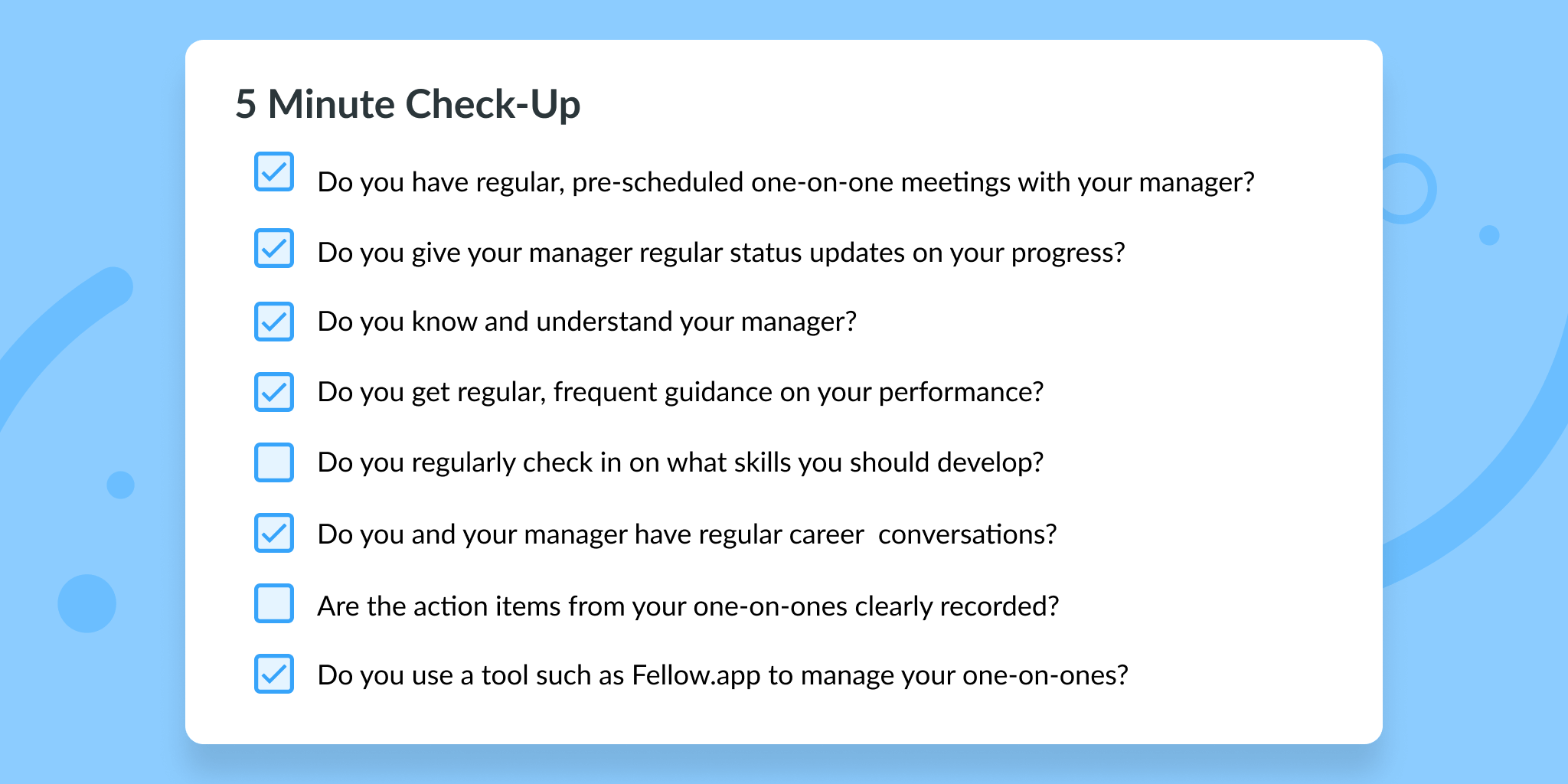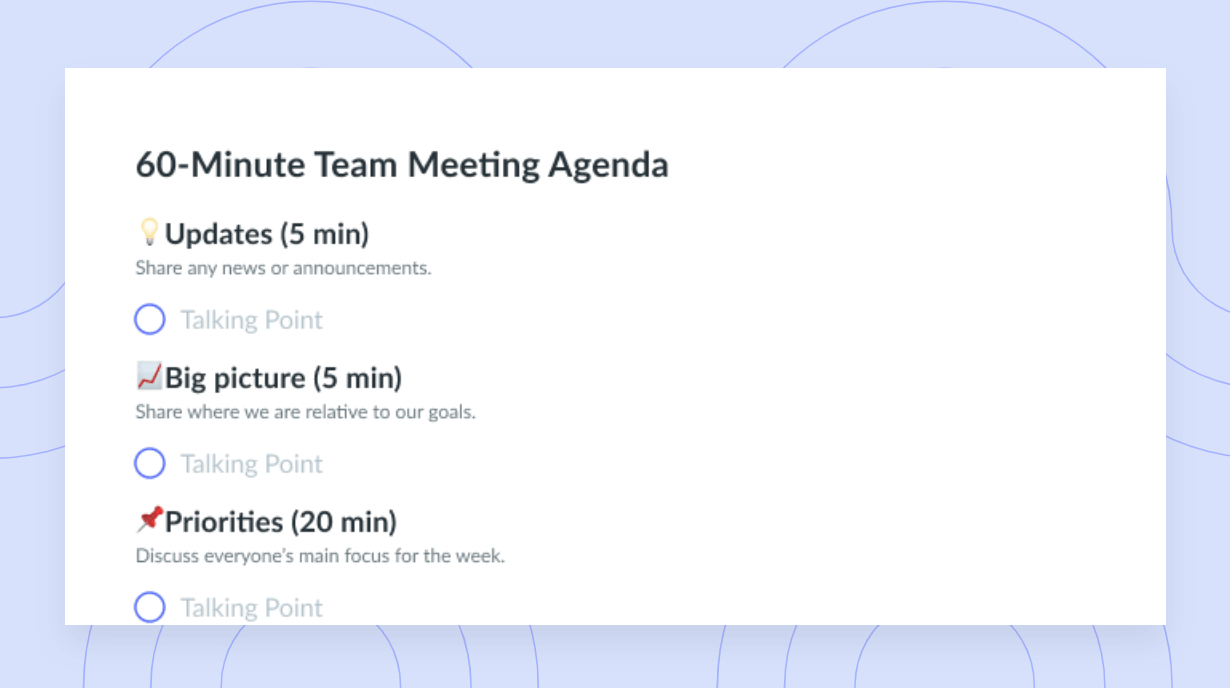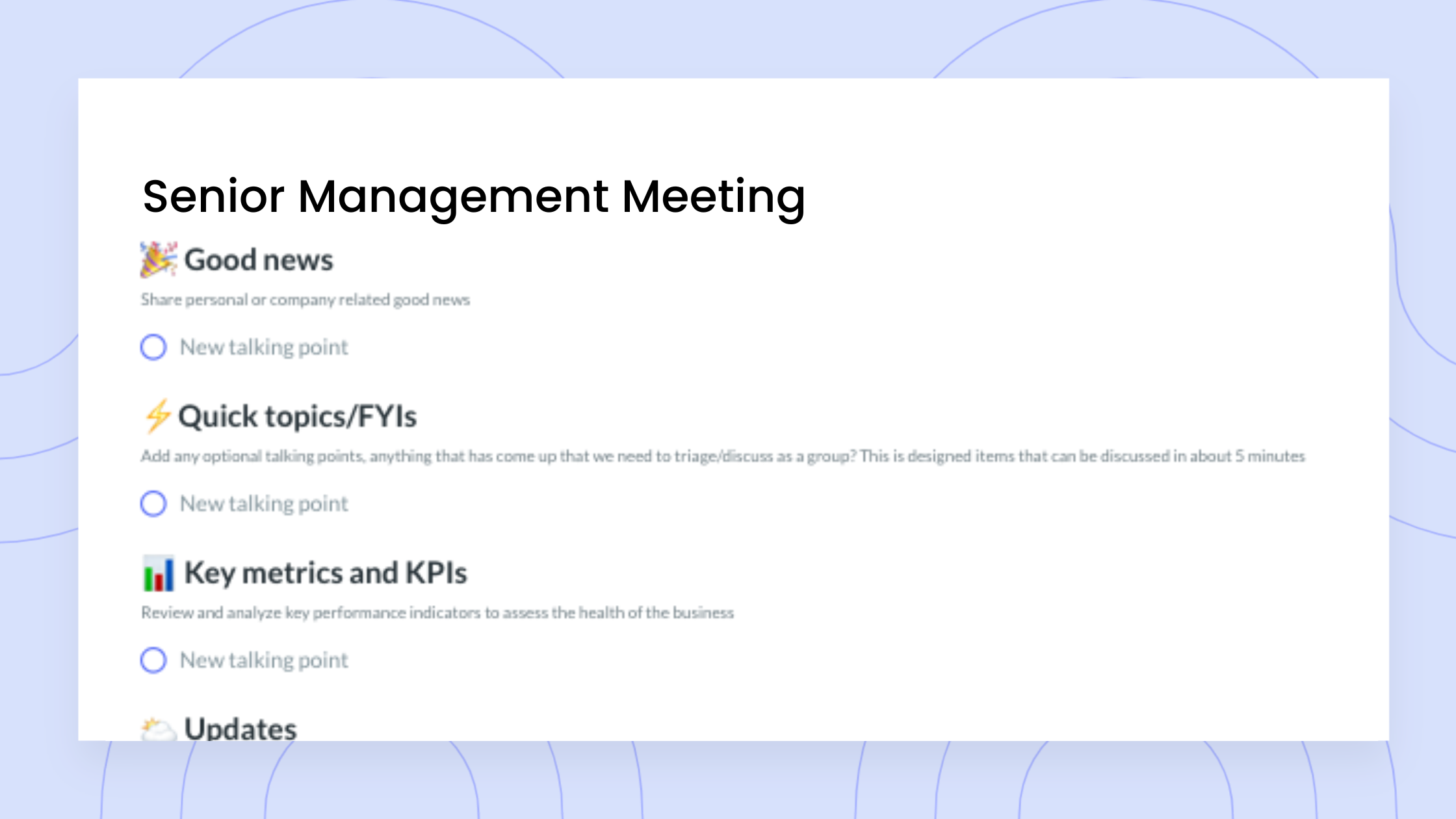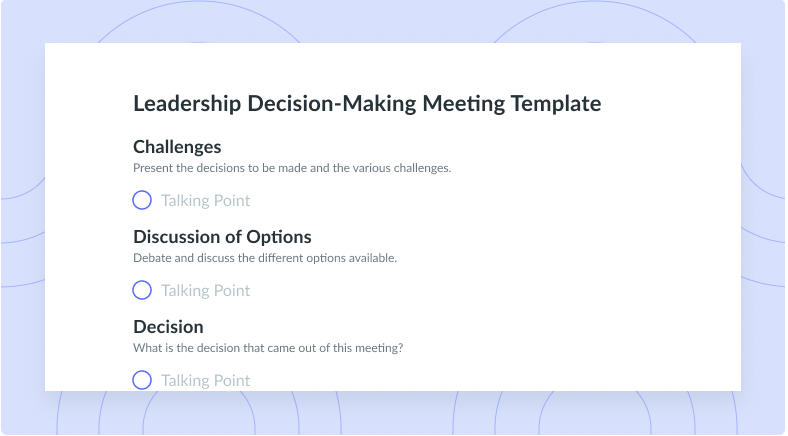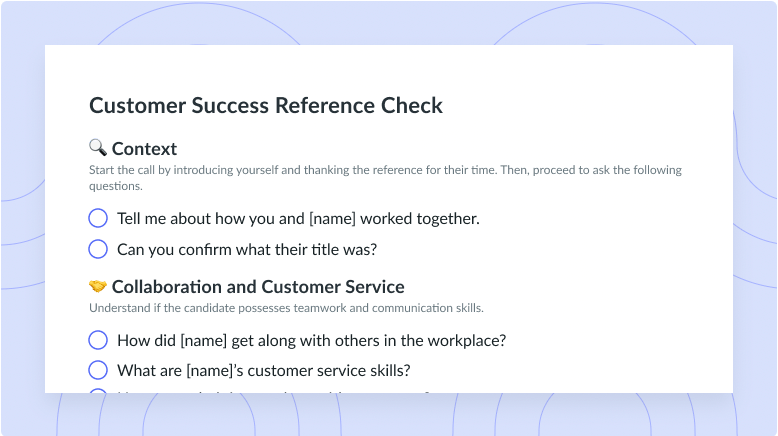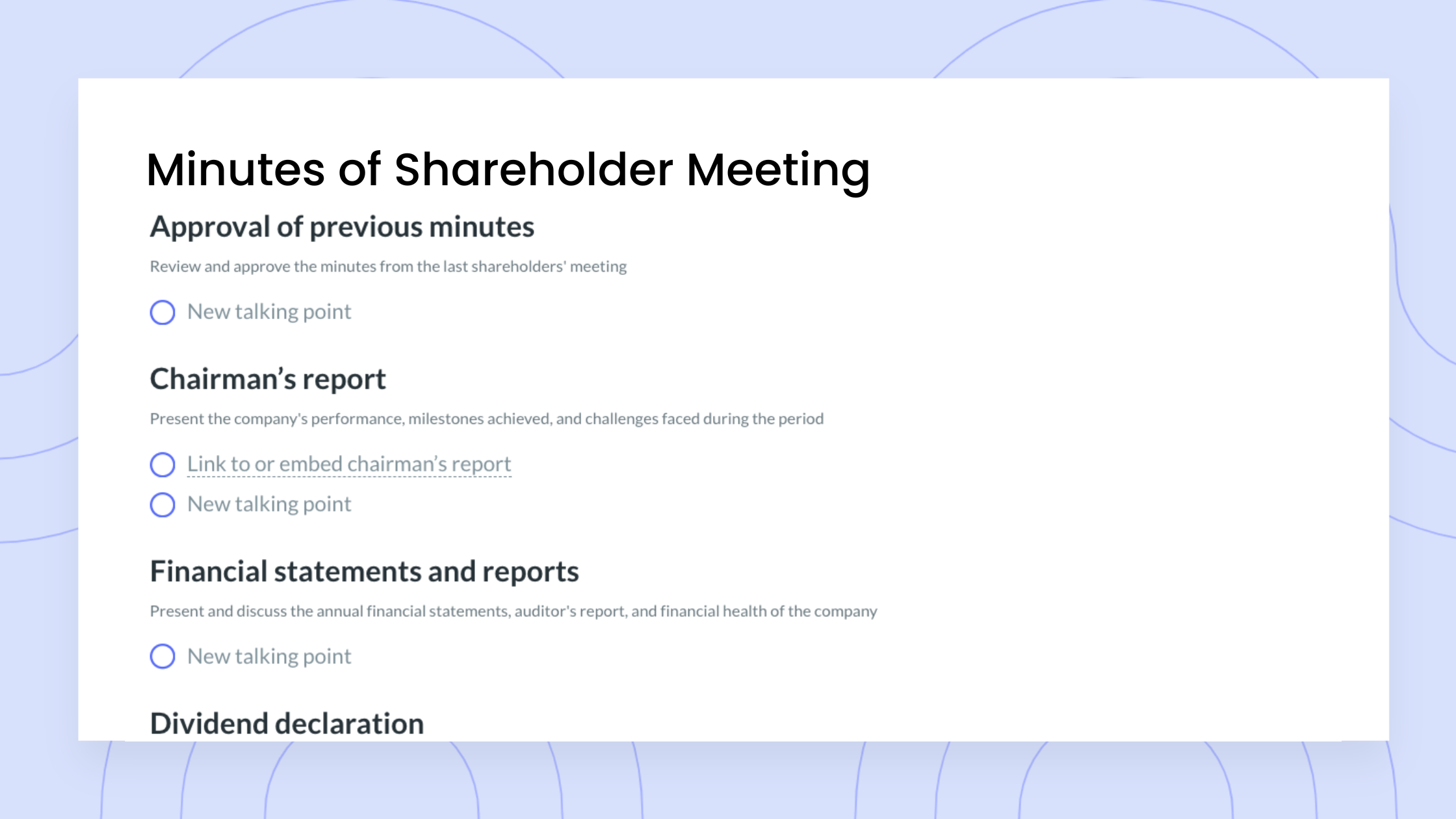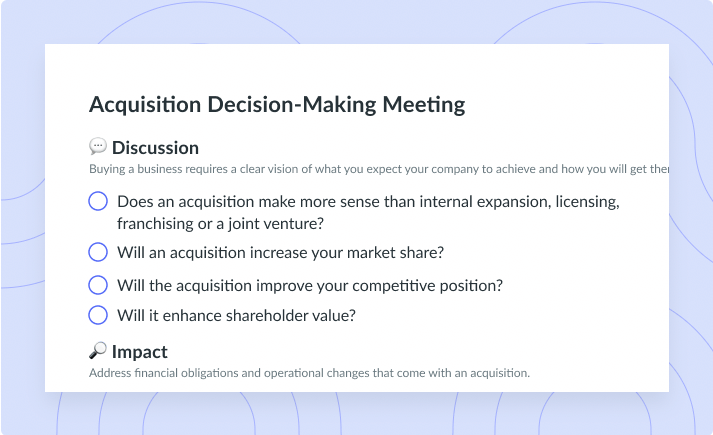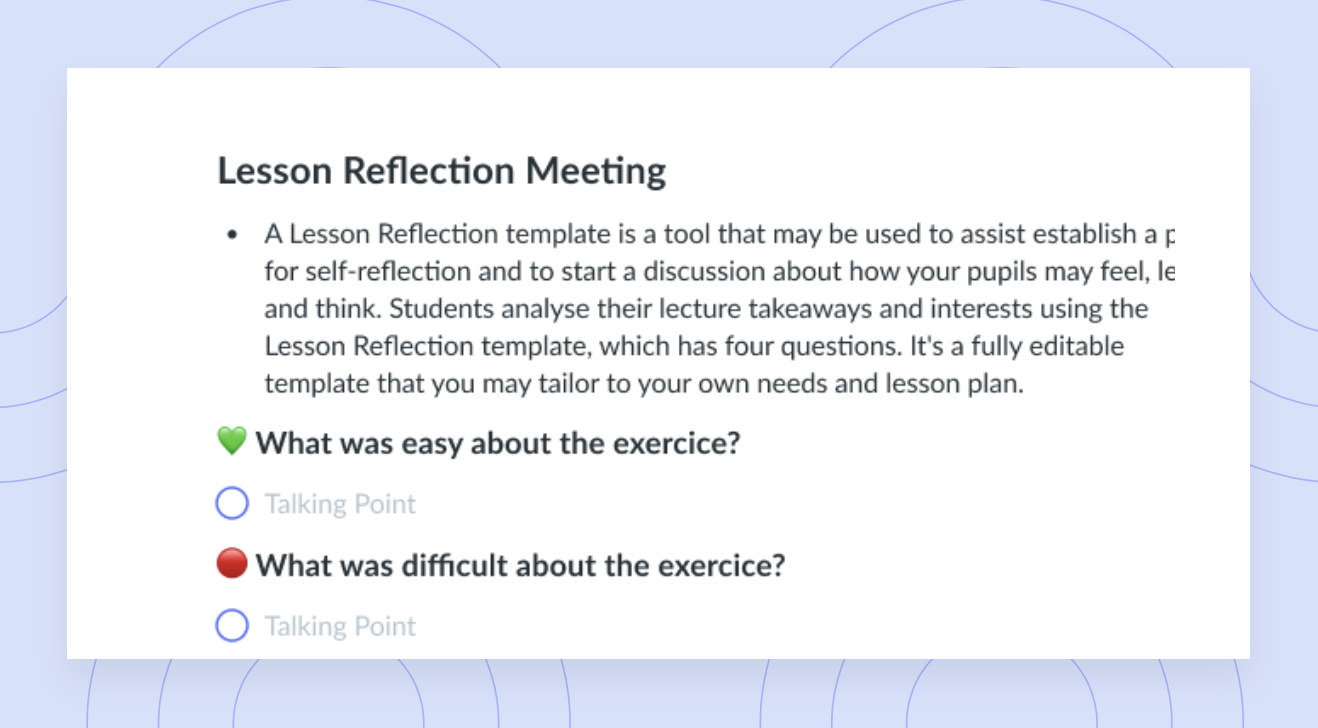What a Meeting Facilitator Does and Why You Need One
Meeting facilitators keep everyone aligned in discussions and decision-making processes. Here are the skills & best practices needed for the role.
If you’ve ever been involved in planning or leading a meeting, you know that there are countless moving parts involved. From creating an impactful meeting agenda to keeping everyone on track, there’s a lot that goes into a productive team conversation. A meeting facilitator ensures that your meetings hit every mark, whether that means keeping the group engaged or finding common ground during high-tension moments.
Keep reading to learn more about the meaning, role, and best practices of a good meeting facilitator. With this guide, you’ll be well on your way to effective meeting facilitation.
- Meeting facilitator meaning
- Essential meeting facilitator skills
- What does a meeting facilitator do?
- 7 best practices for meeting facilitators
- The top meeting facilitation software
What is a meeting facilitator?
A meeting facilitator is a team member who oversees the conversations happening during a meeting. The role of a meeting facilitator includes keeping everyone aligned and on time with the meeting agenda as well as involving everyone in decision-making processes.
According to Forbes contributor Lee Gimpel, knowing how to be a good meeting facilitator can take your lukewarm meeting to a mind-blowing one:
“It can be very challenging to recall when your organization had a good meeting, never mind one that was great. However, after mentally scanning back through the year, the answer that one arrives at is usually when some outside expert came in to run a meeting. This expert is typically a professional facilitator.”
Essential meeting facilitator skills
According to Workshopper, the best meeting facilitators have strong emotional intelligence and well-honed problem-solving skills that help them find common ground during a polarizing meeting. They’re experts on reading body language and subtle cues that indicate when to dig deeper or move on to the next topic of conversation.
Even if these skills don’t come easy for you, there are countless ways to hone them—both inside and outside the office. Be sure to practice active listening during meetings and do your best to see all sides of any issues that come up in your meetings. If you need extra inspiration, try listening to the tips that proven leaders give on the Supermanagers podcast.

Great meetings are just the start
Level up your meeting habits to boost engagement and productivity with a collaborative meeting agenda. Try a tool like Fellow!
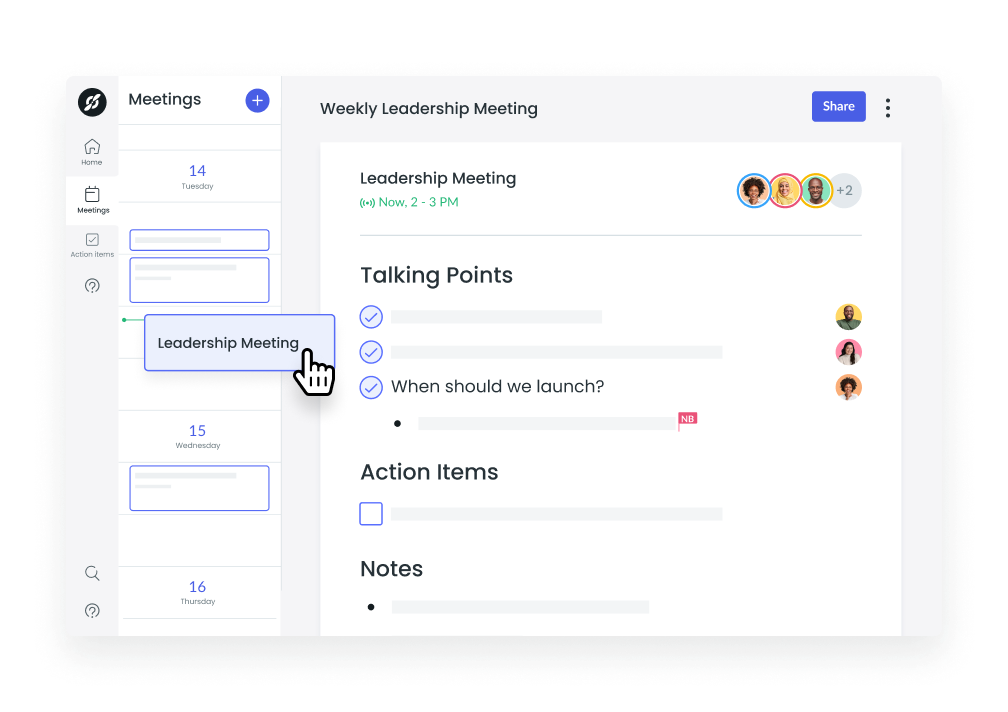
What does a meeting facilitator do?
Below is a list of the most important responsibilities that come along with meeting facilitation, as outlined by the Indeed Editorial Team. Mastering these is how to be a good meeting facilitator.
- Encourage participation. One of the best things a facilitator can do is encourage meeting participation among all team members. When everyone is participating in a meeting, they’re more likely to feel invested in the conversation.
- Create a safe space. The most impactful meetings happen when people feel free to share their two cents without judgment. A good meeting facilitator makes sure that everyone feels comfortable bringing their points, both big and small, to a meeting.
- Keep things on track. No matter the size of your meeting or who’s attending, it can be challenging—but nowhere near impossible!—to stick to a meeting agenda. Being a good meeting facilitator means making sure that people are focused on the task at hand. This includes gently steering the conversation back home if people begin to lose the thread.
- Set goals. If you outline clear, achievable goals for your meeting, the group will thank you for it. Doing so means getting to know the meeting agenda in and out and stating a clear meeting purpose from the get-go.
- Foster collaboration. It’s no secret that two heads are better than one. An effective meeting facilitator knows the value of effective collaboration and encourages their team members to work together throughout a meeting.
- Catch cues. If you’re good at reading body language and taking your group’s emotional temperature, you’re starting at an advantage for meeting facilitation. Having high emotional intelligence can make all the difference when bringing your team closer to common ground during a meeting.
How to facilitate a meeting: 7 best practices
Below are some of the top meeting facilitation best practices.
- Establish a clear meeting purpose
- Create a collaborative meeting agenda
- Assign meeting roles
- Engage your team
- Take meeting notes
- Follow time management techniques
- Request meeting feedback
Establish a clear meeting purpose
Whether it’s for a quick huddle or an all-hands meeting, a good meeting facilitator makes sure that everyone is clear on the meeting’s purpose. When your team members are on the same page about the ultimate goal, they’ll be prepared to put their best foot forward.
You can use Fellow to establish and streamline your meeting goals. The Meeting Guidelines feature prompts you to explain your meeting’s purpose when you create a meeting; this way, your team can reference your goals throughout your meeting to stay on task and engaged.
Create a collaborative meeting agenda
As a meeting facilitator, your meeting agenda is your road map. A collaborative meeting agenda, which allows you to work with a meeting’s key players when planning, can help you ensure that everyone’s concerns are addressed. With a detailed meeting agenda that holds insight from multiple group members, you’re bound to save time and stay productive.
Assign meeting roles
When your team is looking for some direction, assigning meeting roles can be a big help. With your group clear about who to reference at what point during the meeting, you’re set up to run smoothly. Plus, with the weight of guiding a meeting distributed between team members, the problem-solving process becomes less daunting.
Engage your team
When your entire team is engaged in a meeting, you’ll reach your end goal more quickly—and effectively—than ever before. As the meeting facilitator, it’s your job to make sure that everyone feels comfortable speaking their mind. Be sure to stay tuned into the body language of those in the meeting. If they look reserved, think of ways to get them involved in the conversation. Get creative here—you won’t know if you don’t try!
Take meeting notes
Taking meeting notes can keep you engaged during the ins and outs of a complicated meeting. It can also help you keep track of what your team covered. Once your meeting wraps up, your notes can give your team a refresher and point them toward their next steps. Plus, when you’re ready to outline some meeting action items, your notes can be a helpful reference.
Follow time management techniques
As you move through your meeting, you’ll want to make sure that your team is making the most of its time together. Time management techniques such as setting goals, eliminating distractions, and setting realistic deadlines can make all the difference in keeping everyone on task. Using these techniques makes it much easier to allot the appropriate amount of time to each of your agenda items as well. When you and your team stay focused and efficient during a meeting, you’re bound to get your best work done.
Request meeting feedback
The best meeting facilitators know that to improve, they need to hear feedback from their team. Asking for meeting feedback is a great way to learn what about your facilitation style is working well and where you might need to improve. Plus, when you open yourself up to feedback, you show your team members that you welcome their insight in all areas of your work.

The top meeting facilitation software
When preparing to facilitate your next meeting, there’s no shame in having some extra help. From streamlining your problem solving to spiking your meeting productivity, Fellow’s tools can help you facilitate a meeting with ease and style.
You can use Fellow’s Meeting Guidelines to strengthen your meeting management and facilitation skills—and increase your confidence when commanding a meeting room. With Fellow’s AI-powered features, you get a head start on brainstorming and decision-making processes and show up to your meeting with fresh ideas.
If you struggle to come up with a meeting agenda, Fellow offers more than 500 meeting agenda templates to give you a leg up. If you still need an extra hand, you can also use Fellow’s Collaborative Meeting Agenda feature to get the right people involved. And with Fellow’s Google Chrome extension, these features are always right within reach.
Once your meeting is wrapped up, Fellow’s tools can help you synthesize your team’s action items and help you get them to the right people. These tools can make all the difference when empowering your team to aim higher. For Olivia V., a CEO at a small business, Fellow has changed the game when it comes to both her and her team’s facilitator skills:
“Fellow has been incredible for changing the way I lead my team. We’re able to keep track of previous meeting notes to never skip a beat, and encourage our team to take charge and lead meetings to hold themselves to a higher standard. We’ve seen so much growth in our team and Fellow has truly helped facilitate that.”
Parting advice
The purpose of a meeting facilitator encompasses much more than planning—it’s about empowering your teammates to put their best foot forward. From getting everyone on the same initial page to including everyone in later decision-making processes, a good facilitator is the backbone of a successful meeting. Try Fellow’s top-notch meeting management tools to take your facilitation to the next level!








